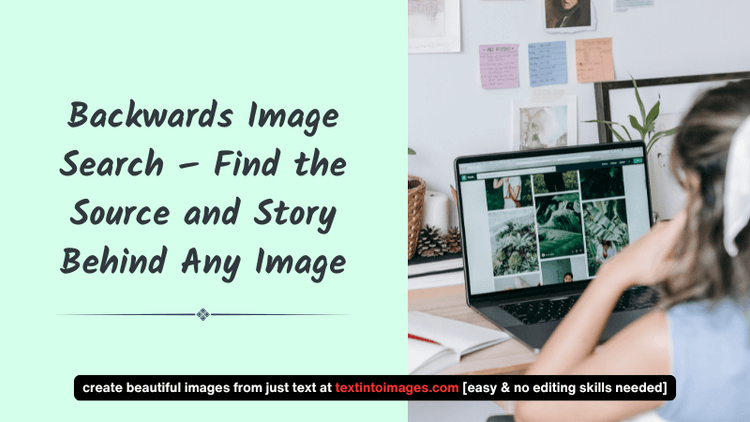Backwards Image Search – Find the Source and Story Behind Any Image

Backwards Image Search – The Modern Guide to Finding Image Sources
Backwards image search is a handy way to find out where an image came from, who created it, and where else it appears online. Instead of typing in a keyword, you start with the image itself. This simple yet powerful method can help with fact-checking, finding better image quality, or even tracking down original creators.
What is Backwards Image Search
Backwards image search flips the traditional search process. Instead of starting with words, you upload an image or paste its link into a search tool. The system then scans its database and shows visually similar matches, related websites, and details about the image’s usage.
Why People Use Backwards Image Search
Verify authenticity
Helps confirm if an image is real or manipulated
Track image usage
Find out if your own images are being used without permission
Discover original source
Identify the photographer, artist, or original publisher
Find higher resolution versions
Get sharper, better quality copies of the same image
Spot related content
Locate similar images or connected topics for deeper research
Popular Tools for Backwards Image Search
Google Images
Upload or paste an image URL into Google Images to find matches across the web
TinEye
A dedicated reverse image search engine that focuses on tracking image origins and versions
Bing Visual Search
Microsoft’s image search tool that works well for shopping and product-related images
Yandex Images
Known for its accuracy in finding similar faces and lesser-known web images
Social media platform searches
Pinterest Lens or Facebook’s AI-powered image search can connect visuals to related posts
How to Do a Backwards Image Search
Using Google Images on desktop
Go to images.google.com
Click the camera icon in the search bar
Upload the image or paste its URL
Review the search results and check for the original source
Using Google Images on mobile
Open Chrome browser
Tap and hold on the image
Select “Search Google for this image”
Explore similar results and related websites
With TinEye
Visit tineye.com
Upload your image or enter its link
Browse through the found matches and compare dates to spot the earliest upload
Creative Uses for Backwards Image Search
Spot fake news
See if an image in a news post has appeared before in unrelated contexts
Check product listings
Find if a product photo is being reused by multiple sellers
Identify landmarks
Discover the name and details of a place captured in a photo
Recognize celebrities and public figures
Match images of famous personalities to news sources or fan pages
Find recipes from food pictures
Use a food photo to locate the recipe or related cooking videos
Tips for More Accurate Searches
Crop out extra elements
Removing text overlays or borders can help match the core image
Use multiple tools
Results differ between search engines, so cross-check with more than one platform
Start with the highest quality image
Better clarity increases the accuracy of matches
Combine with keyword search
Pairing the image with relevant words can refine your results
Privacy Considerations
Avoid uploading sensitive images: Images containing personal details or private moments should be kept off public search tools
Use secure connections: Ensure you are on the official website of the tool to avoid phishing risks
Read the tool’s privacy policy: Understand how your uploaded images are stored or processed
Finally,
Backwards image search turns a single picture into a trail of useful information. Whether you want to find an original artist, check if your photo was stolen, or simply get a better version of an image, the process is quick and simple. With a few clicks, you can uncover context, truth, and connections behind any image you find online.
